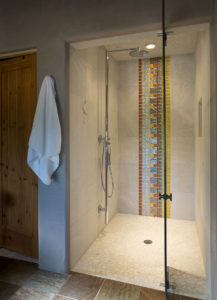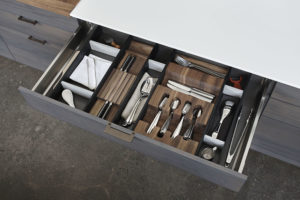Weighted Advice

After last month’s article, we’re counting on the fact that you’re working on trusting that inner design voice, rather than falling prey to the trend du jour. Now that you’re feeling more in control, we’re going to challenge you slightly by adding an asterisk. There are times when we all need to get out of our own heads and seek specific advice on certain design questions. If our inner designer is only complicating things further, where can we turn?
The rookie mistake is to ask everyone within sight for his or her opinion. Many close friends, family members and loved ones are eager to offer theirs. And we often see our interior-design clients struggling to reconcile the resulting cacophony of voices.
The problem, of course, is that very few of those voices are supported by anything other than their own particular sphere of context and experience. We turn to them because we feel we can trust them over a “stranger,” but with what, exactly? Can someone really offer useful advice without appreciating all the moving parts and pieces in thinking through how design works in the real world, and without the expertise to shape individual and unique ideas, histories and personalities into a coherent and affirming space?
Do we do this because we are scared to live with our own decisions? Do we want to impress those from whom we are seeking advice rather than satisfying our own inner desires and needs? If your neighbor says he chose engineered wood flooring for his recent remodel, does that mean that same solution will work for you, your home and your lifestyle? Is it truly useful to ask your teenage daughter to weigh in on the color and fabric scheme for your new living room? While she might have an artistic bent and even a good eye, she doesn’t have a whole lot of life experience.
You’ve probably heard the popular de-motivational saying, “None of us is as dumb as all of us.” It is funny, partly because it suggests a truth. You can damage your ultimate product or project if you blindly incorporate the dumbness of the crowd.
Just like a good meal, a design should be a complete and integrated package. It can easily get watered down and lose its flavor and presence when contradictory ideas are forced into the equation. An exception is when everyone offering an opinion strictly adheres to the same design goals, a situation you can get if a design team are working hand in hand, and in such cases the actual results can be even stronger. But this occurs rarely.
It is important to recognize the point at which you might benefit from a professional’s advice. When you’re feeling overwhelmed and no longer trust your own solutions, carefully consider who to turn to for assistance. Do not immediately call Aunt Helen because she has design flair!
If you do choose to retain a professional, remember why you’re doing it, and give his or her opinion the weight it deserves. A professional interior designer is trained to listen to your needs and desires and to translate them into a shared vision, and not one driven by the marketplace or trendsetters. The resulting clarity (and ultimate happiness and satisfaction) is what you’re paying for.
Speaking of listening, how best to avoid the retail sirens that beckon at your doorstep with each mail delivery, and every shiny, big-city chain store? Put in your earbuds, turn away, and watch for the something better.


